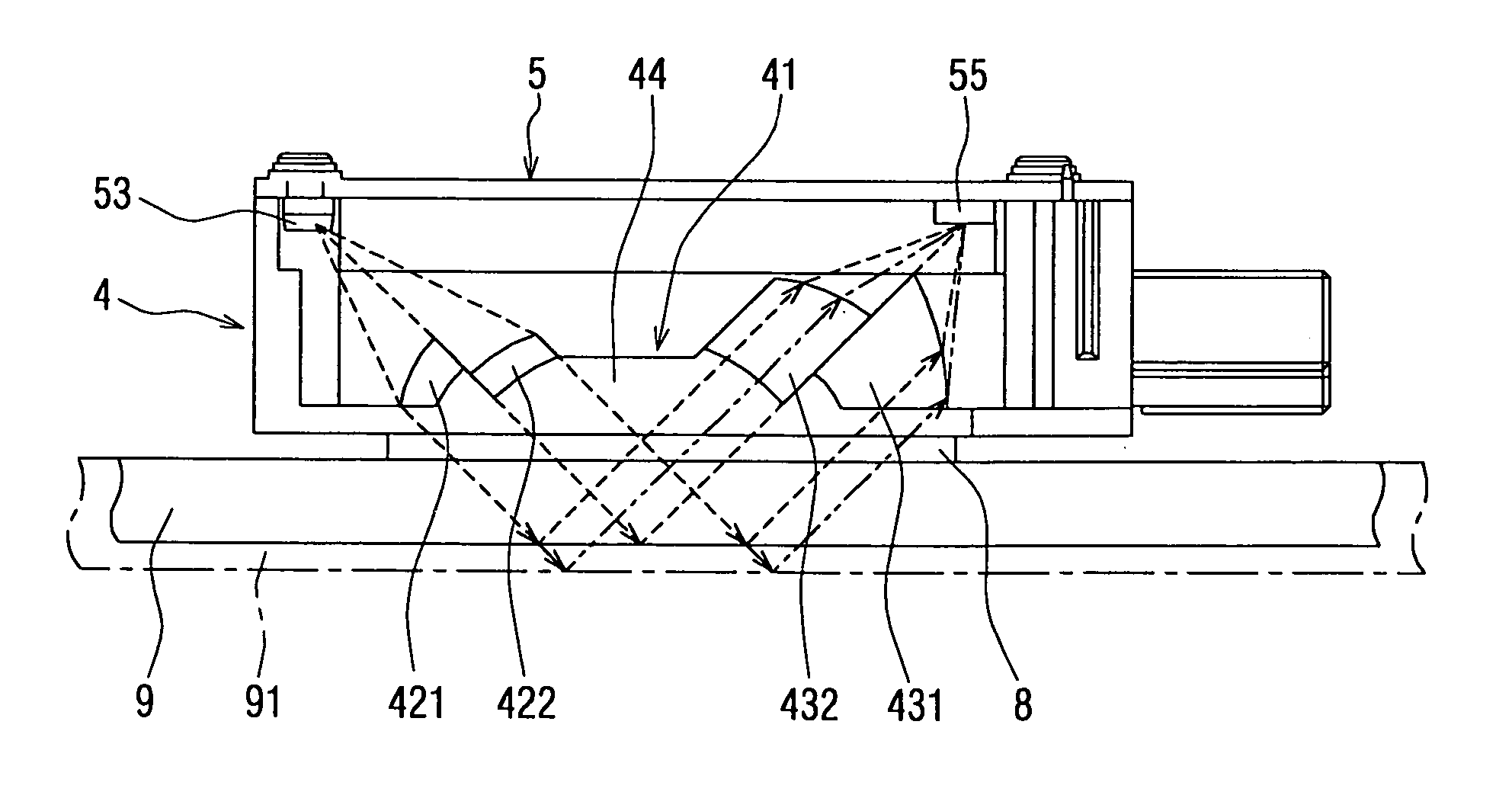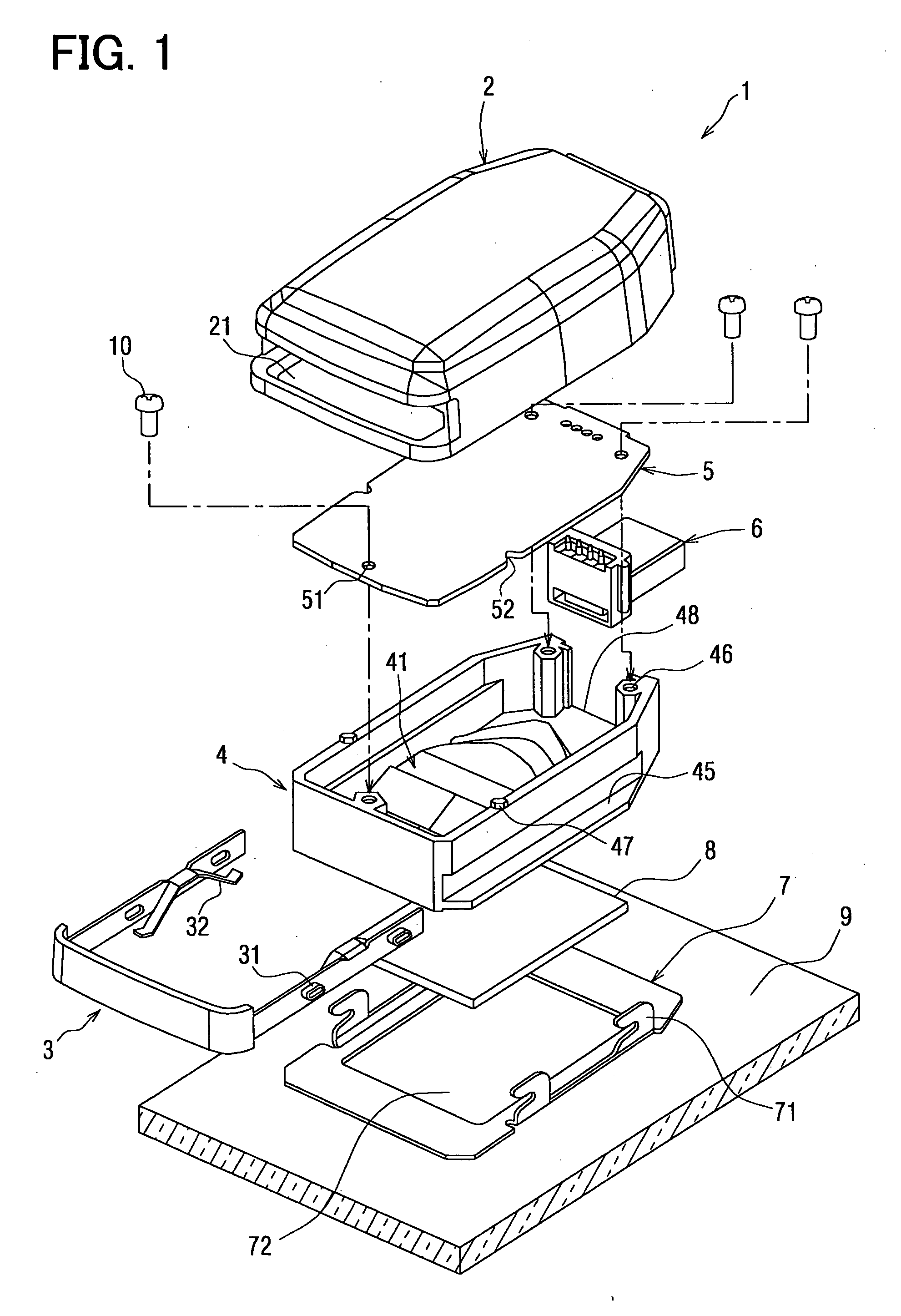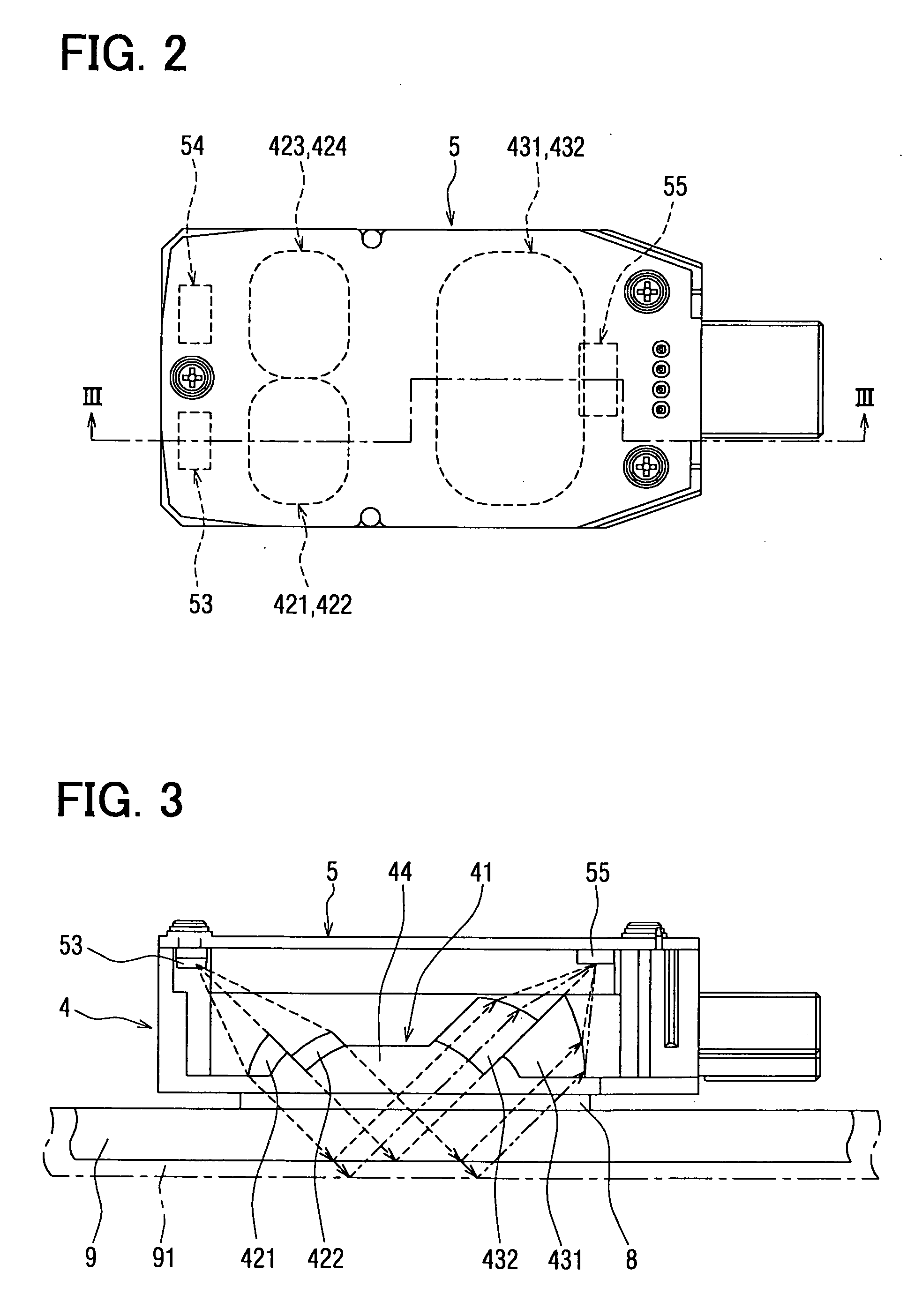Raindrop detection apparatus
a detection apparatus and raindrop technology, applied in the direction of vehicle maintenance, vehicle cleaning, instruments, etc., can solve the problems of increased manufacturing cost, waste of inability to use light emitted to the gap (not received by the light receiving unit), so as to reduce the manufacturing cost of the raindrop detection apparatus
- Summary
- Abstract
- Description
- Claims
- Application Information
AI Technical Summary
Benefits of technology
Problems solved by technology
Method used
Image
Examples
first embodiment
[0022] A raindrop detection apparatus 1 according to a first embodiment of the present invention is suitably used to detect an amount of raindrop landed on an outer surface of a window glass 9 (e.g., windshield) of a vehicle, for example. The raindrop detection apparatus 1 is attached to an inner surface of the windshield 9 without obstructing the sight (field of view) of a driver. Referring to FIG. 1, the raindrop detection apparatus 1 is provided with a cover 2, a case unit 4, a prism 41, a circuit board 5, a connector 6, a stopper 3, a silicon sheet 8, a bracket 7 and the like. The case unit 4 is integrated with the prism 41.
[0023] The bracket 7 is beforehand fixed (for example, by bonding) to the windshield 9 at the position where the raindrop detection apparatus 1 is to be mounted. As shown in FIG. 1, the bracket 7 has multiple (e.g., four) engagement hook portions 71 which are evenly arranged at two opposite sides of the bracket 7. The bracket 7 has an opening 72 at a substan...
second embodiment
[0070] A second embodiment of the present invention is described with reference to FIG. 6. The second embodiment is a modification of the above-described first embodiment.
[0071] Referring to FIG. 6, two recess portions 49 for accommodating a spring 321 are respectively formed at two opposite sides of the fence wall of the case unit 4. The spring 321 can be constructed of, for example, a steel sheet and bent to have a shape shown in FIG. 6. The spring 321 pushes the prism 41 toward the windshield 9 at a substantially central portion of the prism 41. In this embodiment, the single spring 321 is used instead of the two springs 32, which are provided for the stopper 3 as described in the first embodiment.
[0072] According to the second embodiment, two longitudinal-direction ends of the spring 321 are positioned at the outer side of the case unit 4 when being attached to the prism 41. Thus, when the raindrop detection apparatus 1 is mounted at the windshield 9, the two ends of the sprin...
PUM
 Login to View More
Login to View More Abstract
Description
Claims
Application Information
 Login to View More
Login to View More - R&D
- Intellectual Property
- Life Sciences
- Materials
- Tech Scout
- Unparalleled Data Quality
- Higher Quality Content
- 60% Fewer Hallucinations
Browse by: Latest US Patents, China's latest patents, Technical Efficacy Thesaurus, Application Domain, Technology Topic, Popular Technical Reports.
© 2025 PatSnap. All rights reserved.Legal|Privacy policy|Modern Slavery Act Transparency Statement|Sitemap|About US| Contact US: help@patsnap.com



